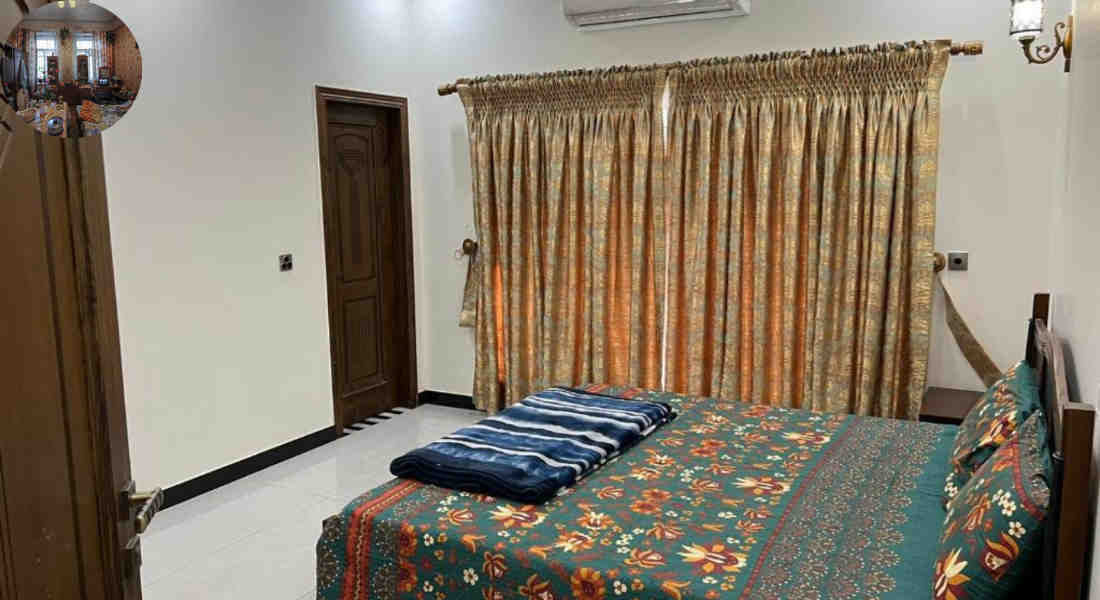A three-bedroom house is often seen as a standard size for a family home, but can it truly accommodate a family of six? While it might seem tight at first glance, many families successfully live in such spaces by creatively sharing bedrooms and optimizing common areas. Typically, a 3-bedroom home can comfortably house 6 to 8 people, assuming two per bedroom, though the actual comfort level depends on factors like room size, layout, and family dynamics. Sharing bedrooms among children, repurposing rooms for multiple uses, and smart storage solutions can make it feasible for a family of six to thrive in a three-bedroom house. However, considerations such as privacy needs, local occupancy regulations, and the size of living spaces also play crucial roles in determining whether this arrangement works well.
The Benefits of Living in a Smaller House:
You can save a lot of money by living in a smaller house.With less square footage, you’ll spend less on utilities, maintenance, and property taxes.Spending the extra cash on family experiences or saving can be a good use of it.
A simplified lifestyle is another perk of downsizing. Fewer rooms mean fewer items to manage and clean. It encourages you to focus on what truly matters—quality time with loved ones rather than worrying about possessions.
Smaller homes often foster stronger connections among family members. Interaction and bonding are encouraged in shared spaces, resulting in lasting memories.
You’ll learn how to maximize every inch of space while discovering new ways to personalize your home environment without excess clutter.
Financial savings
Living in a smaller house can lead to significant financial benefits for families. A three-bedroom home typically costs less than larger properties, which means lower mortgage payments or rent.
Utilities tend to be cheaper too. With less square footage, heating and cooling become more manageable expenses. Imagine saving on those bills each month!
Insurance costs may also decrease with the size of your home. Smaller homes often require less coverage, translating into savings that can add up over time.
This creates opportunities for families to allocate their budget toward experiences rather than just housing.
With these savings in mind, living comfortably doesn’t have to break the bank when you opt for a cozier environment like a three-bedroom house.
You may also read (what documents do i need when buying a house in the uk).
Simplified lifestyle
Living in a smaller space encourages a simplified lifestyle. With fewer rooms, families often prioritize essential belongings and let go of unnecessary clutter.
This intentional downsizing can lead to more meaningful interactions. Shared spaces require collaboration, fostering stronger bonds among family members. Game nights or movie marathons become cherished traditions instead of rare events.
Cleaning takes less time, allowing families to focus on experiences rather than chores.
With limited storage options, each item must earn its place in the household. This cultivates mindfulness about purchases—ultimately leading to better spending habits.
Embracing minimalism opens doors for creativity as families find innovative ways to use their shared living areas efficiently while enjoying quality togetherness.
Challenges of Living in a Smaller House:
Living in a smaller house definitely has its challenges. For a family of six, space limitations can become evident quickly. With everyone needing their own area for activities, finding room can feel overwhelming.
Privacy is another significant concern. When you have multiple children sharing rooms or living areas, personal time may seem scarce. This can lead to conflicts and stress among family members.
Noise levels also tend to rise in tighter quarters. With kids playing and adults trying to work from home, maintaining focus becomes tricky.
Organizing belongings can transform into a complex puzzle as well. Limited storage options mean that everything must have its place—or else chaos ensues. Balancing everyone’s needs while keeping the atmosphere harmonious takes effort and creativity.
You may also read (the role of a vestibule in modern home design).
Space limitations
Living in a three-bedroom house with six family members certainly brings its share of space limitations. Each person needs their own area for privacy, rest, and personal belongings. When bedrooms are shared among siblings or parents, it can lead to conflicts over territory.
Common areas like the living room and kitchen may also feel cramped. Family activities might become challenging when everyone is vying for the same space at once. A game night could turn into an exercise in negotiation as you try to find room for everyone’s favorite games.
Storage becomes critical too. With limited square footage, every inch counts. Keeping things organized can be a daunting task unless you embrace clever storage solutions that utilize vertical spaces or hidden compartments under furniture.
Understanding how to maximize these small areas takes creativity and teamwork from all family members involved.
Privacy concerns
Living in a 3-bedroom house with six family members can raise valid privacy concerns. With multiple people sharing spaces, finding quiet moments becomes a challenge.
Children may struggle to have their own private areas for studying or unwinding. This lack of personal space can lead to conflicts over noise and distractions.
Parents also need some alone time to recharge. Without designated rooms, it’s easy for boundaries to blur, resulting in stress for everyone involved.
Creating zones within the house is essential. For instance, establishing “quiet hours” during homework times might help manage disruptions.
Investing in room dividers or curtains can offer temporary privacy when needed too. These solutions allow family members to enjoy moments of solitude while still living under one roof.
Balancing communal life with individual needs requires creativity and open communication among all household members.
Tips for Making a 3 Bedroom House Work for a Family of 6:
Creating a functional space in a 3-bedroom house for a family of six is entirely feasible with some clever strategies.
Start by investing in multi-functional furniture. Think about beds with built-in storage or sofas that can be converted into guest beds.These pieces can help maximize your living area without sacrificing comfort.
Storage solutions are essential, too. Use vertical space by adding shelves and wall organizers. Under-bed storage bins can keep seasonal items out of sight but easily accessible when needed.
Establishing routines will also aid in managing daily activities effectively. A shared calendar on the fridge helps everyone stay informed about schedules, chores, and events.
Designate specific areas for different activities—homework zones, play corners, or reading nooks—to encourage organization and reduce chaos within your home environment.
Utilizing multi-functional furniture and storage solutions
Maximizing space in a 3-bedroom house requires creativity. Multi-functional furniture can be a game changer for families of six. Consider investing in a sofa bed or a dining table that doubles as workspace. These pieces save room while serving multiple purposes.
Storage solutions also play a vital role. Think beyond traditional cabinets and drawers; ottomans with hidden compartments and under-bed storage are fantastic options. They allow you to tuck away toys, clothes, or seasonal items without cluttering your living area.
Vertical storage is another smart strategy. Wall-mounted shelves free up floor space while displaying books or decor items beautifully.
Designate specific areas for each family member’s belongings to maintain organization and minimize chaos. When everyone has their own spot, it creates harmony within the home environment, making life more manageable despite limited square footage.
Establishing schedules and routines to maximize space usage
When it comes to making a 3-bedroom house work for a family of six, establishing schedules and routines can be incredibly beneficial. With everyone in the household having their own responsibilities, coordinating daily activities ensures that space is used efficiently.
Create designated times for chores, meals, and downtime. This not only helps manage clutter but also fosters cooperation among family members. By assigning specific roles—such as who cleans which area or when shared spaces are utilized—you can maintain harmony in your home.
Consider meal prep days where the whole family pitches in. Not only does this make cooking more manageable, but it also strengthens bonds through teamwork. Scheduling quiet times for homework or reading can turn communal areas into peaceful retreats during those hours.
Encouraging each person to have personal time outside of shared spaces is essential too. Whether it’s heading outdoors or finding cozy nooks within the house at different times, individual moments become treasures that foster personal growth amidst the busyness.
Incorporating these routines cultivates an environment where every member feels valued and connected while maximizing available space seamlessly. With thoughtful planning and compromise from all sides, living comfortably in a smaller footprint becomes entirely possible—even with a larger family size!
You may also read (blueshinehome).

